
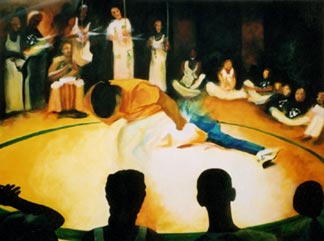
painting
by Michelle Doyle:
unidade
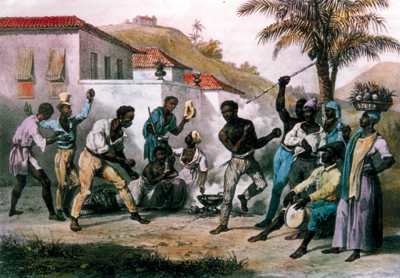
capoeira in the 19th century
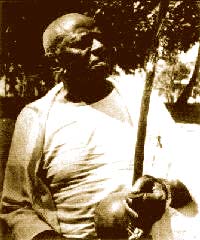
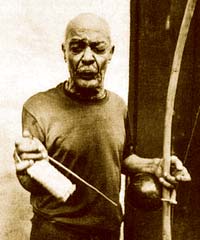
Today,
there are two schools of capoeira: the Capoeira de Angola, founded by
Mestre Pastinha, and the more aggressive Capoeira Regional of Mestre Bimba.
The former school holds that capoeira came from Angola; the latter believes
that it was born in the plantations of Cachoeira and other cities of the
recôncavo region.
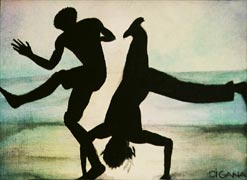
painting
by Michelle Doyle:
praia
Capoeira combines the forms of the fight, the game and the dance. The
movements are always fluid and circular, the fighters always playful and
respectful. Capoeira has become very popular in recent years, and throughout
Bahia and the rest of Brazil you will see the roda de capoeiras (semicircles
of spectator-musicians who sing the initial chula before the
fight and provide the percussion during the fight). In addition to the
musical accompaniment from the berimbau, blows are exchanged
between fighter/dancers to the beat of other instruments, such as caxixi,
pandeiro, reco-reco, agogô and atabaque.
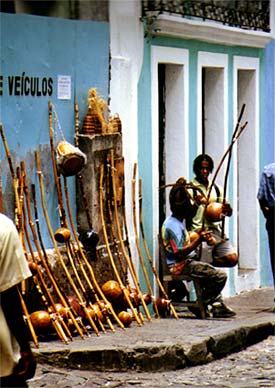
In recent
years, Capoeira has spread all over the world and gained thousands of
adherents. There is hardly any small town in Europe, Canada or the US
without its Capoeira school and led by some resident mestre.
This
page has loaded in a separate window, you can close it when you're finished.
